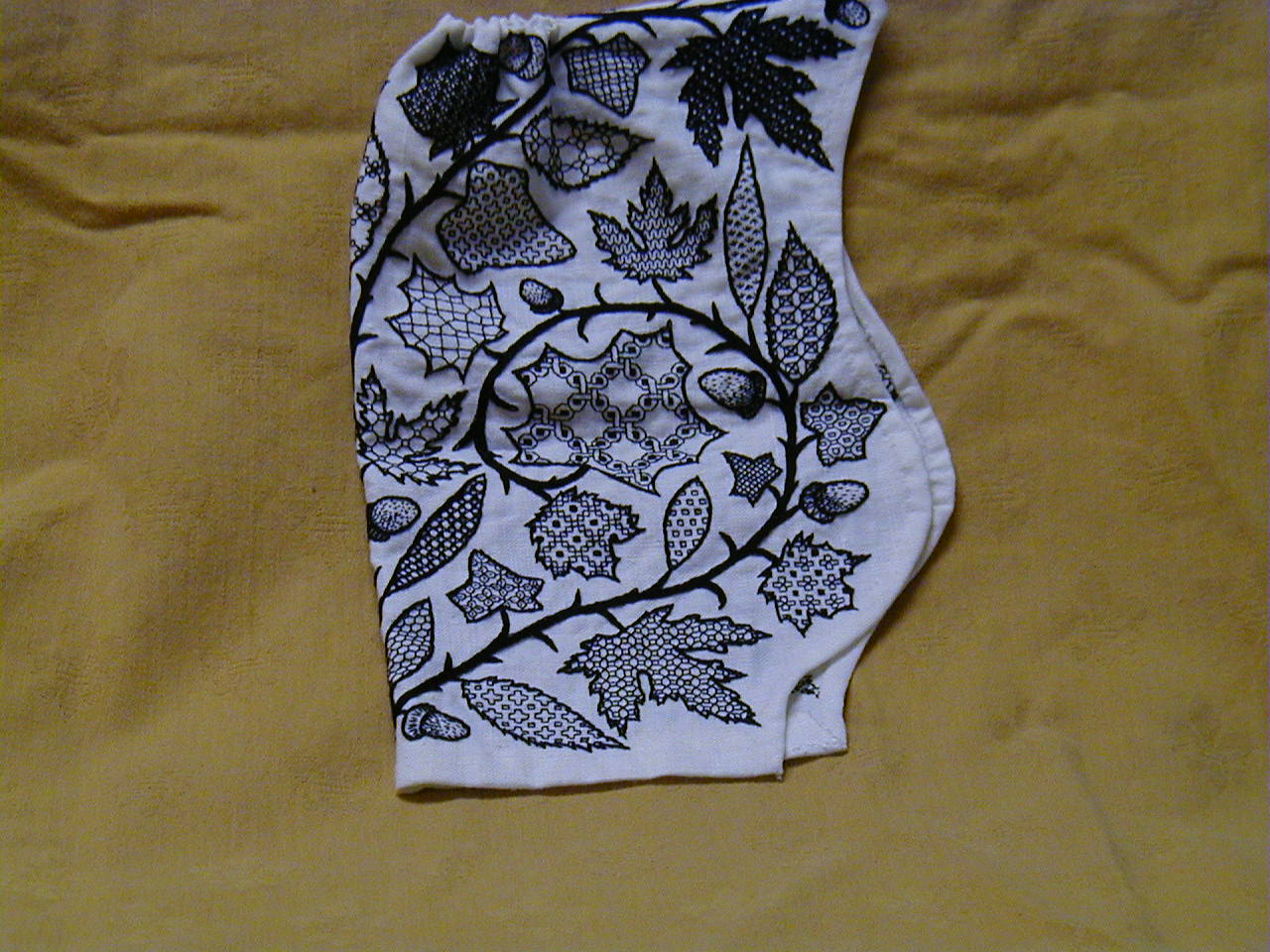Difference between revisions of "Blackwork Embroidery"
| Line 10: | Line 10: | ||
*[http://www.skinnersisters.com/ Skinner Sisters] | *[http://www.skinnersisters.com/ Skinner Sisters] | ||
*[http://www.needlepoint.org/Archives/Blackwork/Article.php BlakworkArticle at the American needlework guild] | *[http://www.needlepoint.org/Archives/Blackwork/Article.php BlakworkArticle at the American needlework guild] | ||
| − | [[Category:Arts and Sciences]] [[Category:Amtgard Things | + | [[Category:Arts and Sciences]] [[Category:Amtgard Things]] |
Revision as of 21:16, 15 December 2014
Blackwork in period consisted of designs worked as a counted thread stitch on even weave linen. Black thread on white linen was most commonly used, but the designs were sometimes worked in red, green, gold, and even blue. It was often used to decorate the necks and cuffs of undershirts. There are many examples of it in paintings from the latter half of the 15th century and all of the 16th century.
The Elizabethans called it "Spanysshe Work". It’s generally believed that blackwork existed in England prior to the 15th century (see Chaucer's description of the miller's wife), it was made popular by Catherine of Aragon, when she married Henry VIII in 1509. Once the Elizabethans got their hands on blackwork, they took it to extremes, decorating entire sleeves and skirts with it. The most typical use of blackwork in Elizabethan times involved outlining leaves, fruit, and flowers on linen, then filling these in with geometric patterns.
One of the wonderful characteristics of blackwork is that it can be worked to look the same on both sides of the material. A ruffled cuff, would look beautiful whether viewed from the outside or inside. Some patterns do not lend themselves to this and should only be used in areas where they will be viewed from one side of the fabric, such as a sleeve, partlet, or forepart.
